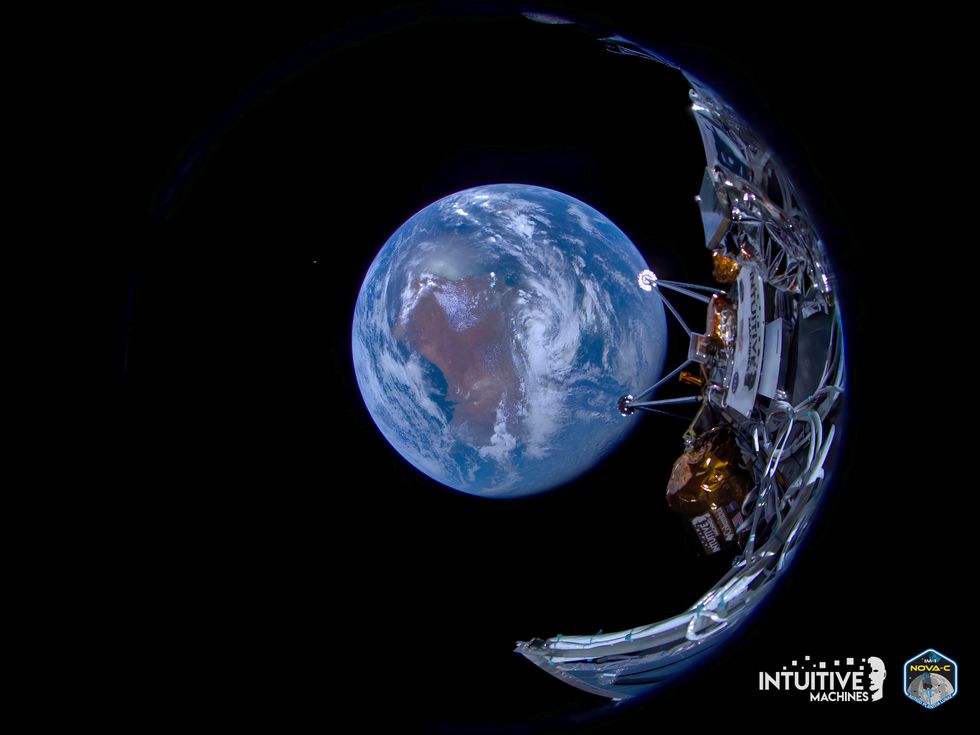
The first landing of a private spacecraft on the Moon represents a “step forward” and is an “historic milestone” for lunar exploration, experts have said.
At 11.23pm on Thursday, Intuitive Machines’ Nova-C Odysseus lander touched down on the Moon’s south pole region.
The moment marked the first US Moon landing since the final mission of the Apollo programme, Apollo 17, more than 50 years ago.
The mission will help advance landing technology for future missions and also help establish how landing on the lunar surface can disturb Moon dust.
Dr Hannah Sargeant based at the University of Leicester School of Physics and Astronomy and at Space Park Leicester, said: “Intuitive Machines have demonstrated that a commercial lander can provide transport and communications services to paying customers wishing to send their instruments to the Moon.
“This is hugely significant in establishing a space economy.
“One major milestone that still needs to be met, is surviving the harsh lunar night which lasts 14 Earth days.
“The first commercial lander to provide heat and electrical power during the lunar night will mean the possibility of continuous operation on the Moon.”

Dr James Blake, research fellow at the Centre for Space Domain Awareness, University of Warwick, said: “The successful landing of Odysseus marks a historic milestone for lunar – indeed space – exploration.
“Both the launch and mission serve as examples of the crucial role that a flourishing commercial space sector will play in future exploration of our Solar System.
“Barring any complications, the payloads aboard the lander will now carry out a range of scientific research and technology demonstrations, paving the way for future crewed missions to the Moon.”
Intuitive Machines have demonstrated that a commercial lander can provide transport and communications services to paying customers wishing to send their instruments to the Moon. This is hugely significant in establishing a space economy
Dr Hannah Sargeant
He added that these early landmarks for the commercial space industry “will provide new insights into the lunar environment and boost the lunar economy as Nasa’s Artemis campaign gears up to send astronauts back to the Moon”.
Dr Blake also said that not all missions will be successful, but that lessons could be learnt from them all.
Nasa is hoping to return astronauts to the surface of the Moon in September 2026, after announcing earlier this year that timetables had been delayed by about a year as safety was a top priority.
The Artemis programme will also see the construction of the Lunar Gateway – a new space station where astronauts will be able to live and work.
Dr Sargeant said Thursday’s landing is a major step forward for the Artemis program and commercialisation of space.
She added: “IM-1 includes a number of Nasa payloads that will help advance landing technology for future missions that will bring Artemis astronauts to the lunar surface safely.
“There are also payloads that investigate how these spacecraft disturb the dusty surface of the Moon during take off and landing.
“The dust can wreak havoc for hardware on the Moon, so it’s important we know how it behaves during these surface missions.”

Some experts suggest the success of a private company reflects the space sector becoming more accessible.
Dr Raul Gonzalez Munoz, lecturer in space economy and policy at the University of Leicester School of Business, said: “Intuitive Machines’ recent lunar landing is another step forward in the frequency of successful soft landings on the Moon, an operation that remains technically complex and with a success rate below 50%.
“Led by a commercial entity, this achievement reflects the ongoing liberalisation of the space sector, yet the extent of this transition remains debatable.
“While private companies have improved cost efficiency and innovation in space missions, much of their funding still originates from governmental sources, especially for exploration missions like Intuitive Machines’ case.”
He added: “This privatisation trend may accelerate near Earth, while lunar and beyond missions, though possibly led by private entities, will probably continue to rely on substantial government support.”
The successful mission, IM-1, comes a month after another US spacecraft, Peregrine, failed to touch down on the lunar surface after a fuel leak.
The failure of Peregrine, operated by US company Astrobotic, marked the third time a private company had been unable to achieve a soft landing on the lunar surface.












